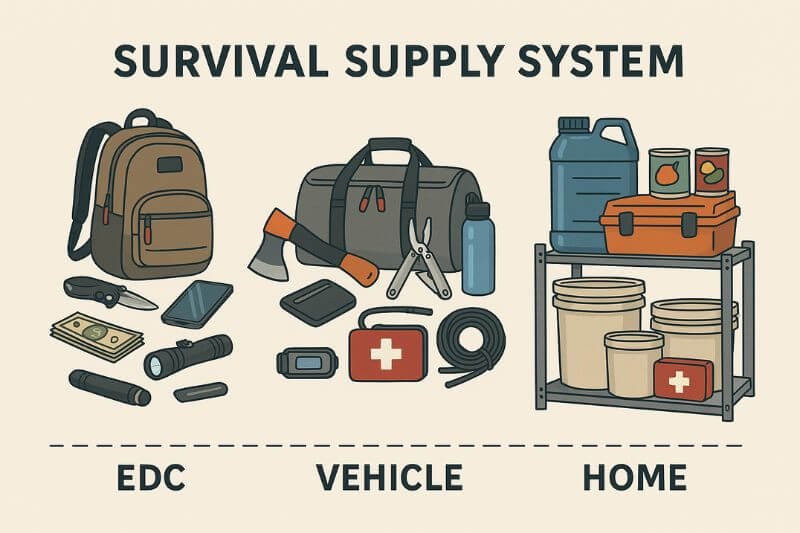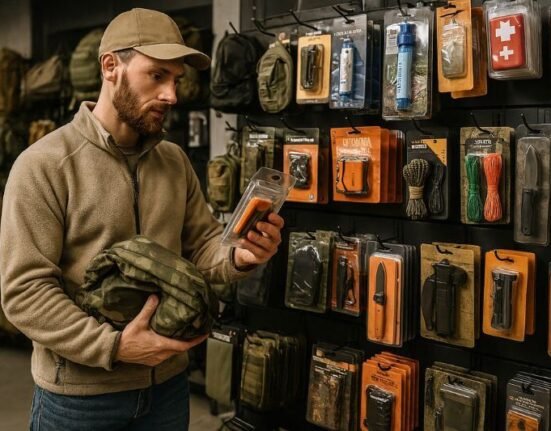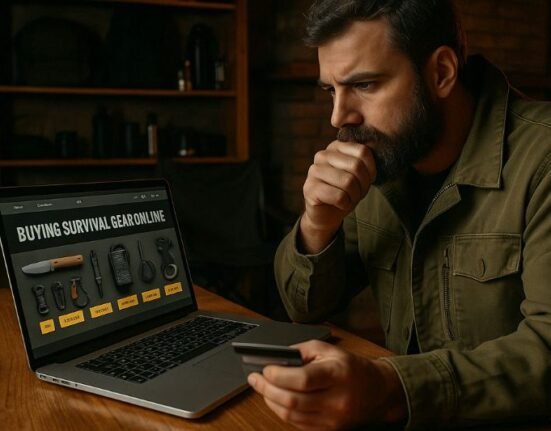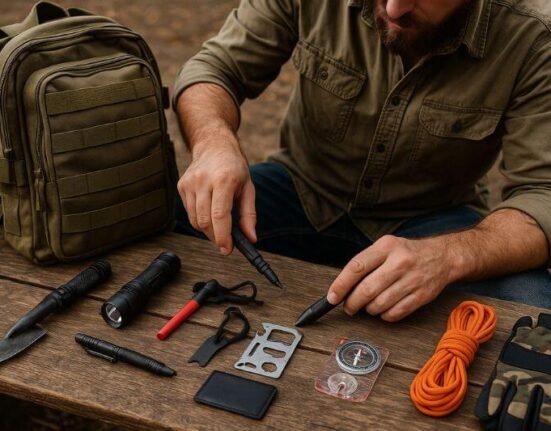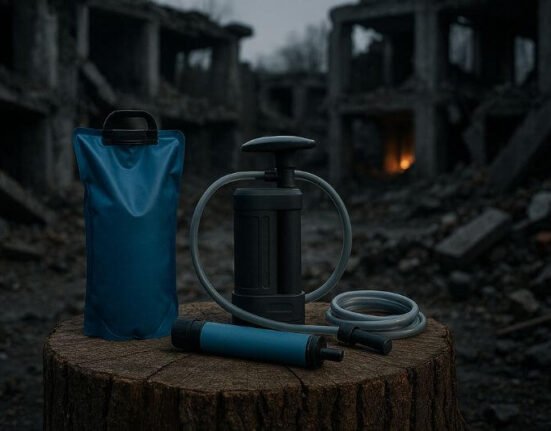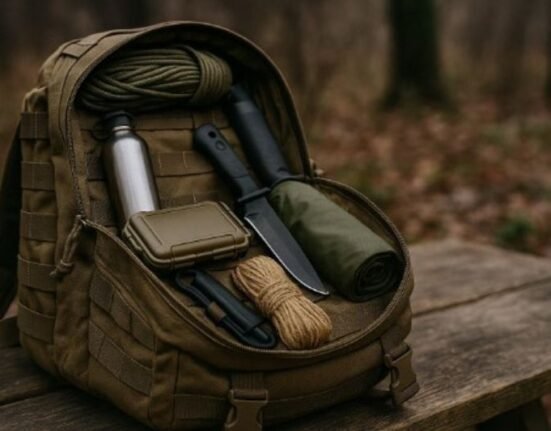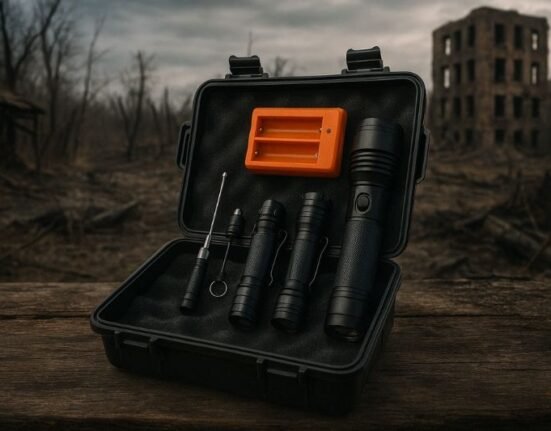Building a reliable survival supply system isn’t about fear — it’s about structure. Most preppers gather gear, but few organize it to match real-life mobility needs. That’s where the 3-tier system comes in: a layered approach that ensures you’re covered whether you’re home, on the road, or caught in an emergency with only what’s in your pocket.
In this guide, we’ll show you how to build a survival supply system based on real scenarios, not fantasy — one that keeps you prepared, mobile, and resilient at all times.
Why a 3-Tier Survival Supply System Works
Emergencies are unpredictable. One day you’re safe at home. The next, a wildfire forces evacuation, or a cyberattack knocks out logistics and comms.
A 3-tier survival supply system breaks down your preparedness into three mobility levels:
- Tier 1: Everyday Carry (EDC) – on your person, every day
- Tier 2: Vehicle Kit / Get-Home Bag – in your car or workspace
- Tier 3: Home Supply System – your main preps and base of operations
“Mobility is survival. If you can’t adapt, you’re a liability.” — PrepperField Guide 2024
This system keeps you agile without sacrificing depth.
Tier 1: Everyday Carry (EDC) — Your Survival Baseline
EDC is your most portable level of readiness. It’s what you carry in your pockets or bag — items that help you face everyday disruptions or major crises with minimal notice.
🎒 Essentials to Include:
| Category | Item Example |
|---|---|
| Cutting | Small folding knife or multi-tool |
| Fire | Mini lighter, ferro rod |
| Light | Mini flashlight or keychain LED |
| Navigation | Compass or offline map on phone |
| Comms | Charged phone + emergency contacts card |
| Payment | Cash ($20–$100, small bills) |
| Health | Mini med kit (band-aids, ibuprofen, gloves) |
| Security | Whistle or legal self-defense item |
💡 Pro tip: Use a discreet pouch or pocket organizer to avoid carrying clutter.
EDC Mistakes to Avoid:
- Carrying too much gear (EDC should be lightweight)
- Ignoring local laws (especially for blades or self-defense tools)
- Relying only on electronics (add analog backups like compass or cash)
Tier 2: Vehicle Kit / Get-Home Bag — Your Mobile Survival Hub
If you commute or travel often, your vehicle-based survival gear becomes critical. Your goal: be able to sustain yourself for 24–72 hours and return safely home, even if roads are blocked or services are down.
🚗 Key Components of a Tier 2 Vehicle Kit:
- Water: 2–3 liters + filter or purification tabs
- Food: High-calorie rations, energy bars, nuts
- Clothing: Extra socks, gloves, poncho, hat
- Fire: Ferro rod, stormproof matches, lighter
- Shelter: Mylar blanket, tarp or small bivvy
- First Aid: Trauma pack + OTC meds
- Tools: Multitool, knife, folding shovel
- Navigation: Local maps, compass, backup phone charger
- Comms: Hand-crank radio, whistle, signal mirror
- Lighting: Headlamp + spare batteries
- Misc: Trash bags, duct tape, paracord (25 ft min)
🧰 Store items in a compact backpack or duffel. Keep it accessible.
When to Use a Vehicle Kit:
- Grid-down events during work hours
- Being stranded on the road
- Natural disasters (snowstorms, floods, fires)
- Urban unrest or evacuations while traveling
✅ Rotate water and snacks quarterly. Recharge batteries monthly.
Tier 3: Home Survival Supply System — Your Base of Operations
Your home is where you store your bulk supplies — the heavy gear, long-term food, and water systems that would be impossible to carry but are vital for prolonged survival.
🏡 Core Home Supplies to Stock:
| Category | Items |
|---|---|
| Water | 90+ gallons per person, filters, purification tools |
| Food | 3-month supply, freeze-dried, canned, dry goods |
| Power | Solar generators, rechargeable battery banks |
| Cooking | Butane stove, rocket stove, solar oven |
| First Aid | Full trauma kit, prescription meds, OTC drugs |
| Tools | Axe, saw, hammer, repair gear, duct tape |
| Hygiene | Soap, TP, bleach, sanitary products, trash bags |
| Defense | Legal tools, barriers, alarms, flashlights |
| Communications | NOAA radio, 2-way radios, printed plans |
| Documentation | Printed IDs, maps, emergency contacts, cash |
💡 Organize gear by category in clearly labeled bins or shelves. Keep a binder with inventory and expiration dates.
Integrating the Three Tiers Seamlessly
These three systems aren’t separate kits — they’re interconnected layers of resilience.
🔁 How the System Interacts:
- EDC supports the Vehicle Kit: If caught away from the car, your EDC keeps you alive until you reach it.
- Vehicle Kit bridges to Home Base: If you’re far from home, the vehicle kit helps you return and re-establish at Tier 3.
- Home supplies back-fill all: Tier 3 contains backups, resupply, and depth for recovery or lockdown.
🧭 Scenario Example:
A major power outage traps you at the office. Your EDC gets you to the car. Your vehicle kit sustains you through roadblocks and delays. Once home, Tier 3 allows you to operate off-grid for weeks.
Common Mistakes When Building a Survival Supply System
Even experienced preppers make these mistakes — here’s how to avoid them.
❌ Frequent Errors:
- Treating every tier as a full-blown BOB (overlap = bulk = burnout)
- Forgetting to test or rotate supplies
- Building the kit once, then ignoring it for years
- Assuming you’ll have time to access Tier 2 or 3
- Focusing on gear before skills
✅ Best practice: Run annual drills simulating disruptions. Identify weaknesses and adjust each tier accordingly.
The 3-Tier Survival System: Master Checklist
| Tier | Key Function | Must-Haves (Sample) |
|---|---|---|
| Tier 1 | Immediate survival (EDC) | Knife, lighter, flashlight, phone, cash |
| Tier 2 | Short-term mobility (Vehicle) | Food, water, tools, tarp, first aid, radio |
| Tier 3 | Long-term resilience (Home) | Bulk water/food, solar power, full med kit |
🎯 Color-code gear by tier if storing in one location (e.g., red = EDC, blue = Tier 2, black = home).
Internal Resources to Boost Your System
- 🔗 Bug Out Bag Essentials: What You Actually Need
- 🔗 Top 25 Survival Supplies for Beginners
- 🔗 90-Day Long-Term Survival Supplies List
- 🔗 How to Organize a Home Prepping Pantry
Conclusion: A Survival Supply System Is a Mindset, Not Just Gear
A real survival supply system isn’t built overnight. It’s layered, tested, and refined over time — just like resilience itself.
By breaking your preparedness down into 3 smart tiers — EDC, Vehicle, Home — you gain agility, security, and peace of mind in every situation.
You’re no longer reacting. You’re ready.
👉 Next Step:
✅ Download our Printable 3-Tier Survival Supply Checklist
✅ Audit your current gear by tier and mobility level
✅ Share this article with your family or prep group
Because when systems fail, your system kicks in.
FAQ: 3-Tier Survival Supply System
Do I need all three tiers to be prepared?
Yes. They work together. EDC is your baseline. Vehicle kit is your bridge. Home is your foundation.
How often should I update my supplies?
Every 3 to 6 months, or immediately after a major event or drill.
Can I combine my Bug Out Bag with my Vehicle Kit?
Yes, but make sure it remains mobile and tailored to evacuation, not home storage.
What if I live in a city and don’t have a car?
Replace the Vehicle Kit with a Get-Home Bag stashed at work or in a locker.









